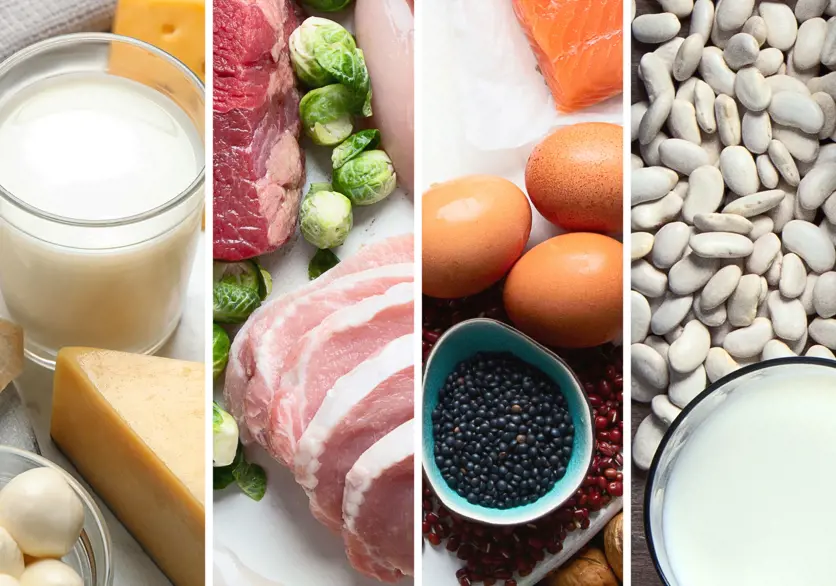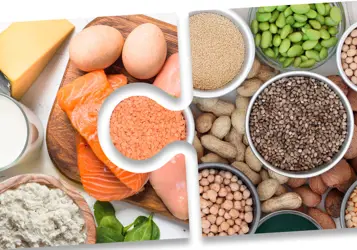By Dr Graham McAuliffe, Life Cycle Assessment (LCA) Specialist at Rothamsted Research (Net Zero and Resilient Farming), UK; Professor Michael Lee, Deputy Vice Chancellor at Harper Adams University, UK; and Professor Jolieke van der Pols at Queensland University of Technology (QUT), Australia
Daily groceries have become a hotbed of dilemmas about sustainable choices. Conscious consumers are seeking out food products with minimal impact on the environment, and manufacturers are doing their best to oblige.
One of those dilemmas pitches plant-based proteins against proteins from animal sources. The backdrop is today’s widespread discussions about whether plant-based proteins are better alternatives due to their lower environmental footprint. A number of life cycle assessment (LCA) studies have backed this view, concluding that consumption of animal-sourced proteins should be restricted or even avoided.
Complexities overlooked
There is good reason to re-examine our perceptions of plant-based and animal-based proteins, however. This is because an environmentally focussed LCA of food items cannot elucidate broad sustainability issues, such as the resilience of rural economies to changing food demands or health implications. Consequently, many other parameters should be part of the equation – including the highly complex nature of proteins.
Within the LCA field, there’s been a lot of focus on comparing the environmental impact of plant and animal proteins in terms of mass produced per hectare or kilogram live weight. Although this can be useful when studying proteins of similar quality, the total protein mass approach invariably means that certain complexities are overlooked.
In relation to proteins, for instance, the missing link is the content and availability of indispensable amino acids (IAA) – the building blocks of protein that we all depend upon in our diet.
Introducing protein quality
A recently published study led by Rothamsted Research took a first step towards bridging this gap by incorporating a measurement of protein quality – the Digestible Indispensable Amino Acid Score (DIAAS) – in LCA calculations. Eight protein sources – four animal and four plant – were included in the study overall.
The results give quite a different picture of how various protein sources impact the environment. What they show is that, when nutritional quality is part of the LCA equation, the impact of animal-based proteins is roughly halved. The explanation is their high DIAAS of more than 100%, which means their environmental impact is balanced out by the higher content and availability of IAA compared to low-scoring protein sources. In addition, animal-based proteins are free of compounds that inhibit amino acid digestion, such as phytates.
Of the four plant proteins included in the study, only soybean (as tofu) scored above 100%, and the DIAAS of wheat was just 43%. What this shows is that it’s necessary to consume 2.3 times more wheat-based protein to obtain the same IAA balance as tofu.
Gram for gram, proteins from dairy and lean unprocessed meat sources are, generally, the most efficient. In other words, simple ‘mass-based’ comparisons of protein-containing foods are insufficient to obtain a realistic overview of their environmental footprint and contribution to sustainable food systems overall.
Towards multi-faceted analyses
Studies like this one are just the beginning of a new multi-faceted approach to LCA. Now we’ve started incorporating the question of nutritional quality. From here, we will bring in additional social and economic parameters that will enable us to take a holistic look at the sustainability of our global food system.
Another research priority for us as sustainability scientists is to tighten our links with industry, so we can obtain more representative data to calculate footprints throughout the supply chain, from cradle to plate.
One thing that is abundantly clear in the face of an ever-growing global population is that the world needs more protein. Indeed, to feed 11 billion people sustainably, we cannot do without plant-based or animal-based proteins. It’s important that we see them as complementary sources of nutrition rather than competitors.
Instead of relying on studies that produce over-simplified messages about what we should or shouldn’t eat, we must work towards a 360° understanding of what responsible consumption looks like. Then we can all focus on getting the best environmental, nutritional and economic value on the consumers’ plate.
Contributors
In addition to G. McAuliffe., M. Lee, and J. van der Pols, this work was conducted with the support and contribution of the following authors:
• Dr Taro Takahashi (Rothamsted Research and University of Bristol, United Kingdom)
• Dr Ty Beal (Global Alliance for Improved Nutrition (GAIN) and University of California, United States of America)
• Professor Thom Huppertz (Wageningen University and Research and FrieslandCampina, Netherlands)
• Professor Frédéric Leroy (Vrije Universiteit Brussel, Belgium)
• Professor Judith Buttriss (Academy of Nutrition Sciences, United Kingdom)
• Professor Adrian Collins (Rothamsted Research, United Kingdom)
• Professor Adam Drewnowski (University of Washington, United States of America)
• Professor Sarah McLaren (Massey University, New Zealand)
• Dr Flaminia Ortenzi (Global Alliance for Improved Nutrition (GAIN), Switzerland)
• Dr Stephan van Vliet (University of Utah, United States of America)
This blog contains material and information intended for B2B customers, suppliers and distributors, and is not intended as information to the final consumers.
























